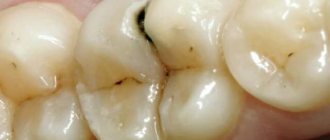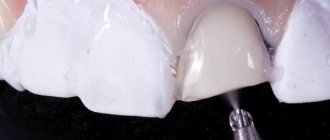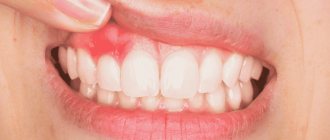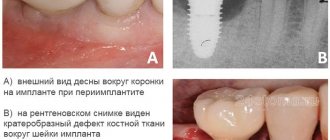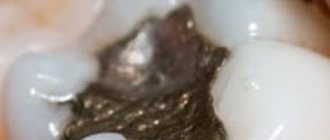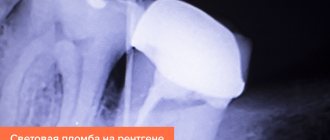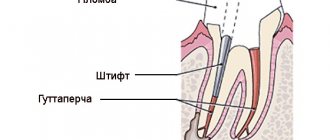Every person goes to the dentist at least once in his life. An unbalanced diet, genetic predisposition, lack of minerals, lack of proper hygiene, smoking and other factors negatively affect the condition of teeth, leading to rapid destruction of enamel and the appearance of caries. Only timely treatment will preserve oral health and a beautiful smile. The most common option for dental care is placing a filling on a damaged tooth. What are the materials and how is the procedure?
Why fill it?
Filling is an effective way to restore the anatomical shape of a tooth and its functions. The primitive method of treatment first appeared in the 1st century BC, and low-melting lead was used as a working material. Since those times, dentistry has changed dramatically, and today the strongest and completely safe quick-hardening mixtures are used to install fillings. They are as reliable as possible and look aesthetically pleasing, practically indistinguishable in tone from dental tissue.
If a tooth is destroyed by injury or disease, installing a filling will help restore its integrity. This is a common procedure for both the doctor and the patient. Tooth restoration with a filling is required in many cases:
- enamel is destroyed by caries;
- the appearance of non-carious lesions;
- The filling is placed after root canal treatment.
If you do not seek timely dental care, the tissues will continue to deteriorate and an infection may appear in the oral cavity, which will harm the entire body.
Important! Many patients delay visiting the dentist after noticing small black spots or a small hole in the molars. Delay is fraught with serious consequences, including tooth loss.
About paid fillings, policies and quality of treatment
“I came with a compulsory medical insurance policy to see a dentist. The doctor performed certain manipulations on me and asked: “Which filling should I get - a simple one or a good one?” At the same time, she noticed that I had to pay for a good filling. Tell me, what is the difference between a good filling and a simple one? And was the money taken from me legally?”
- We can, and we will help. We are often contacted by residents of different areas of the region who cannot urgently undergo some kind of examination. This could be an ultrasound, biopsy, computed tomography. We immediately contact the medical organization and check whether the patient has been placed on the waiting list for two or three months in advance. If you have heart pain and an ultrasound needs to be done now to establish a diagnosis and prescribe the correct treatment, then the doctor is obliged to organize an extraordinary examination. When the examination is carried out as planned, you can wait. The decision must be made by the doctor who is observing you. If, for health reasons, you cannot wait three months for an ultrasound scan, and the clinic does not cooperate, then contact the insurance company.
— If your problem remains relevant today, please come to the insurance company, write a statement, and we will sort it out. If you are wrongfully denied surgical intervention, then we will assist in organizing surgical treatment for your spouse. Our address: Blagoveshchensk, st. Krasnoarmeyskaya, 110.
JSC MSK Dalmedstrakh ranks first among insurance companies in the Amur region in terms of territorial coverage - its representatives work in all cities and districts of the region. The company has effective measures to protect the rights of insured citizens and resolve difficult situations that arise in medical institutions.
“I heard that we will soon have plastic policies that will be valid throughout Russia. If you are in another region, you can contact a medical organization with such a policy, and you will be provided with full medical care. When will you start issuing plastic?
Kinds
Various types of fillings are used to repair holes and cracks. Their composition, purpose and service life differ.
By material
Patients of modern dental clinics can independently choose the compositions that the doctor will use for treatment or restoration. Filling material differs in strength, consistency, and hardening time. Which one to choose depends on the problem the person is addressing.
Cement
Just a few decades ago, this material had no alternative competitors. It was possible to place a cement filling on a tooth in any clinic, and its cost was minimal. They were made on the basis of phosphate and silicate powders, which hardened under the influence of a chemical reaction when mixed with liquid.
The dentist needs to work with such material quickly, and after filling the patient should not consume food or water for 2 hours. Advanced clinics refuse cement fillings - the material is characterized by low adhesion, even under a technically correctly installed filling, food debris can get in, and carious processes can continue to develop underneath it.
Plastic
A damaged tooth without a filling continues to rapidly deteriorate, posing a danger to neighboring units and the oral cavity. Some dentists suggest using plastic to eliminate the problem. Such fillings are characterized by rapid hardening, excellent strength, and chemical resistance.
However, it is worth noting the disadvantages of the material. Over time, the plastic filling decreases in size and sags, and may be irreversibly stained by bright drinks. This will lead to the need to quickly replace the insert, which is associated with additional financial expenses.
Note! Plastic fillings are slightly toxic.
Composite light-curing
Photopolymer fillings are ideal for dental treatment. It has a paste-like consistency, is easy for a doctor to work with, and the material hardens under the influence of a special ultraviolet lamp. A variety of shades allows you to choose the one that will best match the tone of your native enamel. Thanks to this, it is from photopolymer that fillings are placed on the front teeth. To add shine, the composite is sanded with fine abrasive attachments after installation.
Ceramic
In terms of its properties, ceramics are closest to natural enamel. It is not surprising that this material is often used for fillings. Dentists make special ceramic inlays based on an impression of a pre-treated molar. They completely replicate the anatomical features of the tooth, and after installation, the chewing load will be evenly distributed over the entire surface. Over time, ceramics do not change color, do not wear off, and do not shrink. The only disadvantage for the patient is how much a filling costs for a bad tooth.
Glass ionomer
This type of cement is often used in complex therapy against caries in children. They contain fluoride, which prevents recurrent caries. Since the material is quite fragile, a composite is usually applied on top of it - it is more aesthetically pleasing, resistant to abrasion and not subject to shrinkage.
By service life
Depending on the problem with the tooth, dentists offer the installation of 2 types of fillings.
Temporary
It is used for diagnostic purposes when the dentist needs to observe how a tooth responds to treatment. Installing a temporary tooth filling prevents medications from escaping and moisture and pieces of food from entering the open cavity. After a couple of days or months, the material is removed and the teeth are treated further.
Constant
This is a permanent element of the tooth. Installed for several years, good fillings made from quality materials can last up to 10 years without the need for replacement.
How teeth are filled
If caries has appeared, a piece of enamel has broken off, or an old filling has fallen out of a tooth, then a trip to the dentist is mandatory! The availability of modern equipment, fast-acting anesthetics and good materials makes the treatment completely painless and comfortable for the patient. Before filling, the doctor will assess the condition of the oral cavity, remove carious stains, and, if necessary, carry out additional treatment for pulpitis or periodontitis.
The filling is placed according to a single scheme:
- the cavity is disinfected;
- the cleaned cavity is dried;
- Antimicrobial pads are placed inside if necessary;
- the prepared cavity is filled with a filling mixture, it is formed and illuminated with a polymerization lamp;
- the frozen mass is polished.
Important! If the filling is placed correctly, then the patient can comfortably close his jaws.
The nuances of treating anterior teeth
Restoration of anterior teeth requires a special approach. There are special requirements for the material that is used to restore the surface of the visible part of the dentition. It must be immune to temperature changes, biocompatible with native enamel, durable, and able to withstand constant chewing loads. After cosmetic repairs with photopolymer or light fillings, the front teeth will look beautiful and healthy.
What to do with a wisdom tooth?
Eights today are considered to be a rudiment. If holes appear in these molars, then not every doctor undertakes to save the dental unit. Most often, they resort to extraction because it is unknown how the tooth will behave after treatment. Wisdom teeth are filled only in certain cases:
- if the nearest tooth is destroyed and the figure eight can be used to install a prosthesis;
- in the presence of an antagonist;
- with severe damage to the integrity of the dentition.
The procedure for treating wisdom teeth is no different from the standard one.
The dental clinic offers to install a paid filling
The timing of diagnostic instrumental (radiographic studies, ultrasound studies) and laboratory tests in the provision of primary health care should not exceed 14 (in Moscow 10) working days from the date of appointment. The timing of computed tomography (including single-photon emission computed tomography), magnetic resonance imaging and angiography in the provision of primary health care should not exceed 30 (in Moscow 26) working days from the date of appointment.
This means that if a citizen develops a disease of the oral cavity, salivary glands and jaw, he (she) has the right to receive the necessary dental care (in a clinic, hospital) from a medical organization at the district, regional, and, if there are medical indications, at the federal level. free of charge.
First, contact the administrator of the medical organization (chief physician, deputy chief physician, head of department) with a request to explain the reason for the refusal or request for payment. In most cases, the problem is resolved on the spot. If the administrator refuses to help, contact your medical insurance company (name, phone number, address, email address is on your compulsory medical insurance policy). Insurance company employees will provide you with the necessary advice and, if necessary, take measures to solve the problem.
The dental clinic offers to install a paid filling
treatment of root canals of teeth: treatment of root canals using NITI rotating machine instruments, filling of root canals using thermoplastic gutta-percha and imported pastes, removal of foreign bodies from root canals;
prevention of dental diseases: preventive cleaning, removal of dental plaque using an ultrasonic device, removal of age spots, plaque, coating with imported fluoride-containing preparations, deep fluoridation of teeth, teeth whitening;
What you should (not) pay for at the doctor: 8 non-obvious situations
It is legal? No. “Light-curing fillings have always been a stumbling block in dentistry. They are considered the strongest and most stable and were often imposed on patients as paid services, explains Alexey Starchenko. “However, from January 1, 2018, light-curing fillings are included in the State Guarantee Program and must be installed free of charge to citizens.” Only in some situations, for medical reasons, may it be necessary to install a different, non-light-curing type of filling - then this must be justified and recorded in the card.
It is legal? No. The deadlines for the provision of medical services are clearly stated in the SGBP. Diagnostic instrumental studies (X-ray, mammography, ultrasound) and laboratory tests must be carried out a maximum of 14 calendar days from the date of appointment. You can wait no more than 30 calendar days for CT and MRI.
Suppose you want to see a pulmonologist (oncologist, endocrinologist, epileptologist or other specialist), but the therapist does not give a referral because he sees no reason. Essentially, this means that you will have to pay for a consultation with a specialized doctor.
A trip to the local clinic is not the most entertaining activity in the world anyway. And if you suddenly ask for money for a medical service that you expected to receive for free, your mood completely deteriorates. To pay or not? Let's look at the most typical situations.
“If you are sure that your attending physician is wrong with the diagnosis and you really need the advice of a specialized specialist, you can write a statement of disagreement with the actions of the doctor and with the diagnosis he made addressed to the head of the clinic or to the medical commission. The period for consideration of the application is 30 days,” says Natalya Ostapenko.
Conventional chemical
The main difference between a simple (chemical) filling and a light filling is how they harden. A regular filling becomes hard due to a chemical reaction that occurs when different types of filling material are mixed. The result is a consistency with the required density and elasticity.
Dentists typically use two types of conventional chemical fillings:
- Composite - it contains several different chemical ingredients, which, when hardened, can differ significantly from the natural color of tooth enamel. The material hardens evenly, but does not last long - usually about 2 years.
- Glass ionomer - contains a special liquid and powder, which are mixed in the required proportion.
The composition hardens due to an acid reaction. Dentists can add additional components to this mixture as needed. Attention! Glass ionomer filling is good because it has the ability to release fluoride, which serves as a preventive measure against the re-development of caries.
Where and how can you treat your teeth for free?
I have been treating a tooth in St. Petersburg. One tooth with two canals for three weeks now. Free with arsenic. It seems like they are making such inconveniences on purpose. For me to give up and go to a paid clinic.
Basic conditions
here in Nakhodka. You also have to wait in line for shit. Five coupons will be thrown away. I treated 2 front teeth. The canals were poorly treated. inflammation began. They unsealed it and put the paste in there. wait 2 weeks. but everything is free according to the policy. caries was told to go to a paid one. increase in fee. Before this, the front tooth was torn from above. I don’t know what they injected. do not speak. most likely Novacaine. the old fashioned way. So I thought I would die there. such pain. It's like they're digging into their brains. the whole clinic came running. I felt really bad. Then the doctor offered two paid injections for 500 rubles each. gosh . The doctor also sells pins. but they don’t exist. and it is not known when they will be. mayhem. free medicine. wouldn't be funny.
25 Apr 2022 uristgd 158
Share this post
- Related Posts
- Will dated 1996
- Details for state duty for divorce 2022
- New Rules for Submitting Applications to Artek 2021
- Preliminary Investigation Forms 2021
Is it possible to install a light seal under the compulsory medical insurance policy?
Knowing your rights often helps you avoid problems and also unnecessary expenses. What we definitely won’t skimp on is our health. By the way, some medical institutions take advantage of this, trying to extract money from patients for what they are entitled to for free under the compulsory medical insurance policy.
On the issue of the legality of the actions of officials, you always have the right to clarify or make an official request and receive an answer to it within the time limits established by law to the management of the clinic, the municipal health department, or the territorial department for compulsory medical insurance. This also applies to the issue of pricing. In addition, it should be understood that the current system in the Russian Federation for the provision of free medical services is regulated, in particular, by territorial admission standards for certain medical services per day, month, etc.
Some clinics enter into agreements with insurance companies that allow free treatment of children. Thanks to the children's compulsory medical insurance policy, parents have the opportunity not only to install fillings on baby and permanent teeth, but also to cope with a number of other problems:
The cost of a light seal starts from 800 rubles. in regular clinics. The amount can increase several times if the patient is treated in a paid dental clinic. The dentist may also offer the patient to pay additionally for anesthesia. The list of free services under the compulsory medical insurance policy includes ordinary lidocaine. If this drug is intolerant, the patient is offered an alternative anesthetic or a paid one (carpural, which requires a specific syringe).
- preventive examination at the dentist;
- treatment of bleeding gums;
- removal of dental plaque in the traditional way (manual). If a patient wishes to undergo ultrasonic cleaning, you need to check with the clinic whether this is included in the list of free services;
- removal of tumors;
- root canal treatment, etc.
